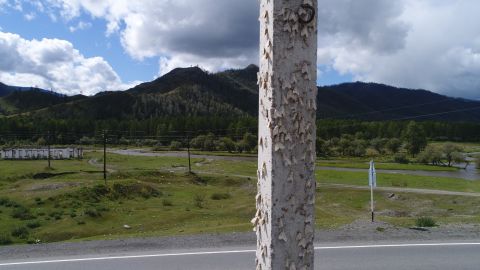SibFU Assesses Impact of Unpaired Silkworm on Birch Trees
Russian scientists have proposed to assess damage to deciduous trees in the foci of the spread of the pest — the unpaired silkworm — using remote sensing data. To control the changes that occur with trees after insect damage, the authors used an original portable device — a dielectric Fourier spectrometer, which allows to determine the condition of plants as quickly and completely automatically as possible.
An integrated approach combining remote and traditional ground-based methods of studying the situation in forests damaged by phytophagous insects provides more information than the usual means of observation and analysis. This will allow for more effective prevention of outbreaks of mass reproduction of the unpaired silkworm and faster response to the already begun lesion of forests — in particular, birch trees.
The unpaired silkworm is one of the most famous pests, feeding on the leaves of many ligneous plants. The birch forests of Western Siberia are subject to large-scale outbreaks of mass reproduction of this insect. Assessing the risks of damage by silkworms to plantings and the response of the trees themselves to such damage is extremely important for forest management.
The scientists of Siberian Federal University (Krasnoyarsk) together with colleagues from the Sukachev Institute of Forest SB RAS, the Federal Research Center “Krasnoyarsk Scientific Center SB RAS” and the Institute of Systematics and Ecology of Animals SB RAS (Novosibirsk) studied the extent of damage to birch trees in Western Siberia by the unpaired silkworm.
“Due to the large areas and the scattering of lesions on the territory, ground-based observations do not allow us to quickly track all the effects of the pest on the forest and the reaction of the forest to damage by phytophages. Therefore, the scientific team of Siberian scientists proposed to connect remote sensing — this way it is possible to determine the stages of damage to trees in a short time and with less effort and develop measures to restore the affected forest,”noted Vyacheslav Martemyanov, Head of the Laboratory of Ecological Physiology at the Institute of Systematics and Ecology of Animals SB RAS.
“Due to the new method, we can accurately evaluate outbreaks caused by the unpaired silkworm. The obtained indices provide greater analytical significance than a simple remote reduction of vegetation indices in the field of research. Studying the seasonal dynamics of indicators relative to reference area helps to detect characteristic signs of an insect outbreak,”said Olga Tarasova, co—author of the study, Doctor of Agricultural Sciences, Professor of the Department of Ecology and Environmental Management at the School of Ecology and Geography of SibFU.
Taking into account that the birch trees studied by the researchers are constantly exposed to other negative phenomena (drought, diseases caused by bacteria and fungi, etc.), then the proposed method will help determine and evaluate exactly the damage caused by the unpaired silkworm. The proposed method of identification of silkworm breeding outbreak zones can be included into the automated forest management system based on remote sensing.



